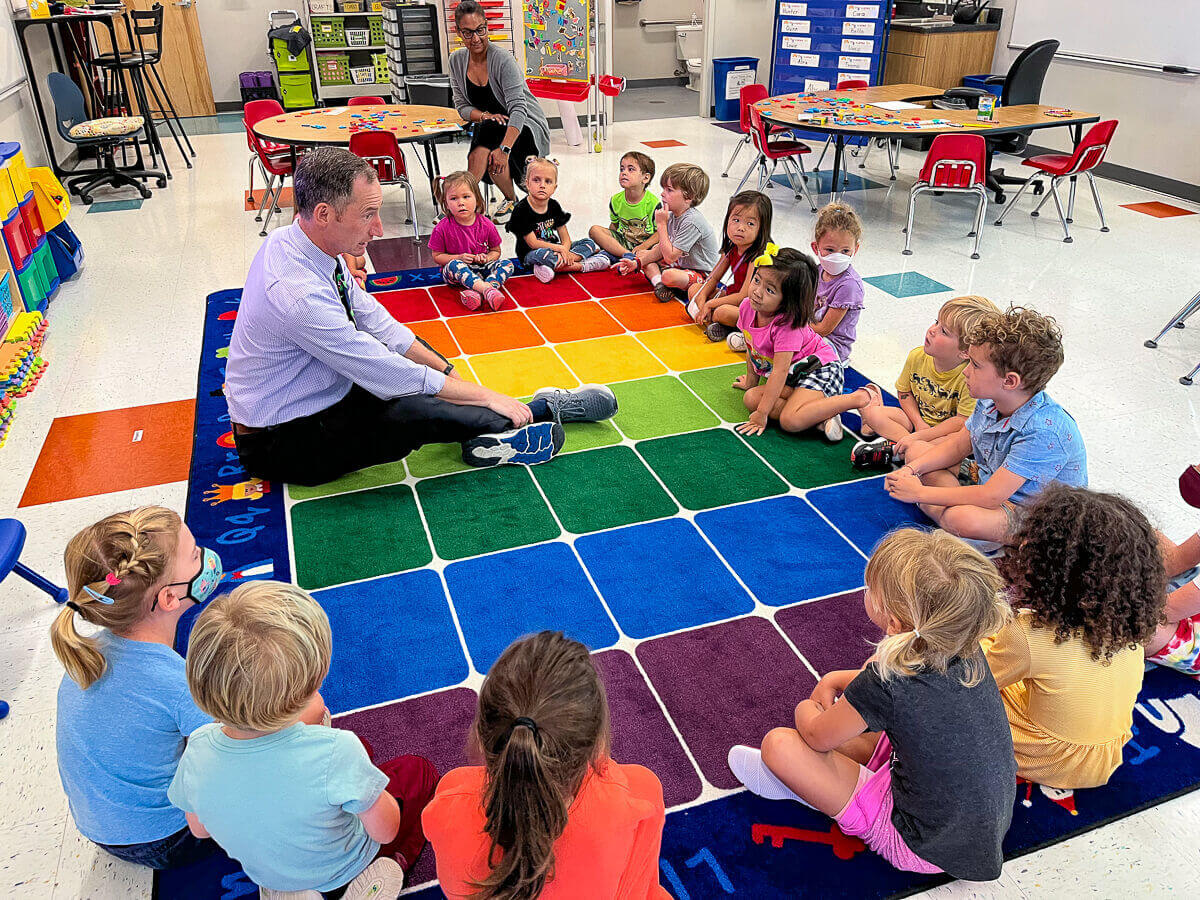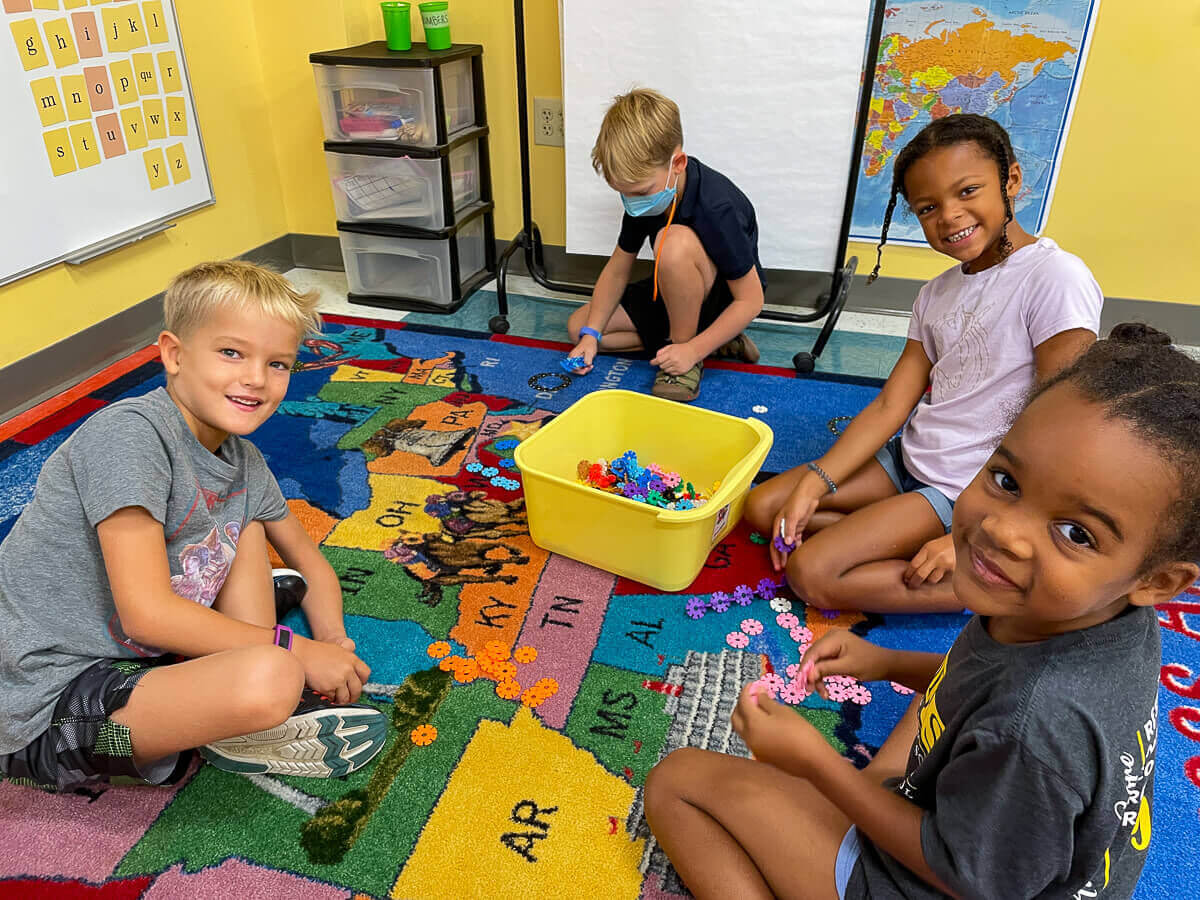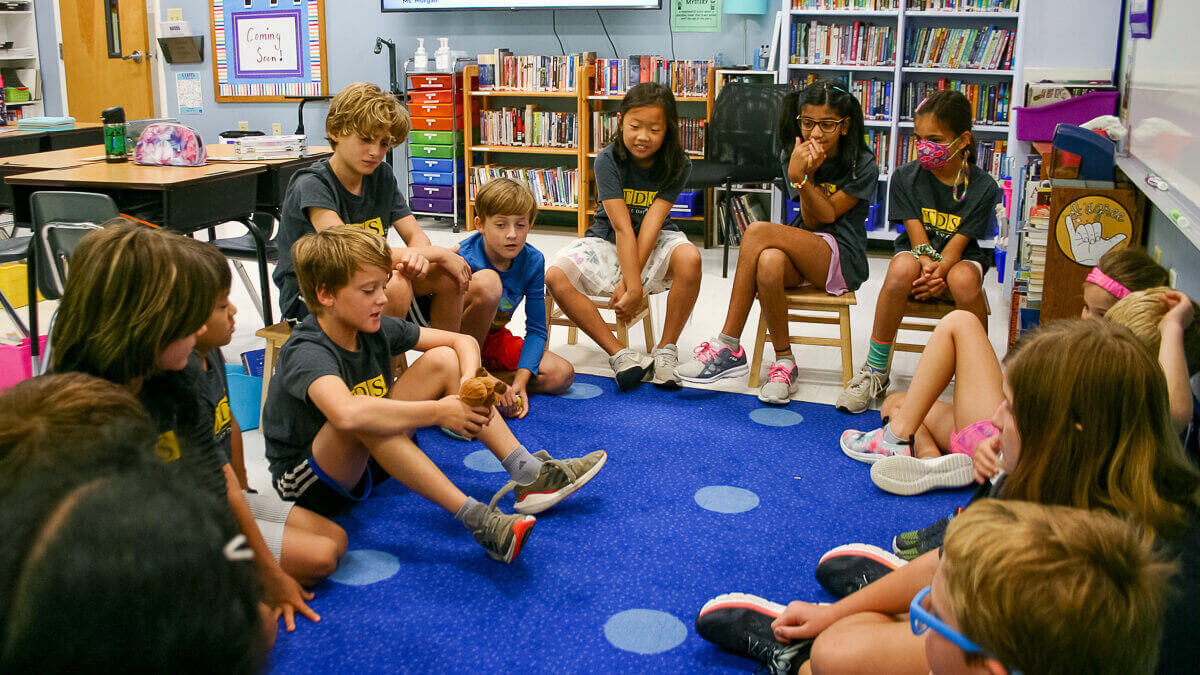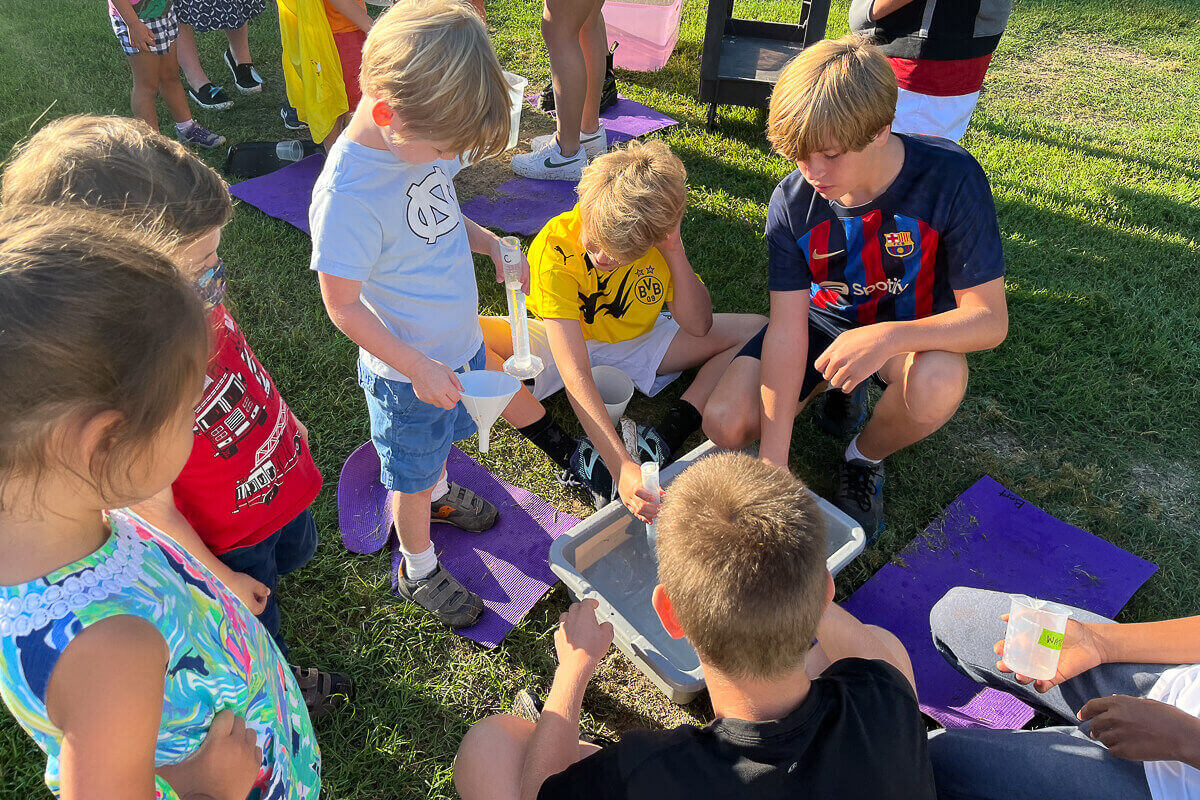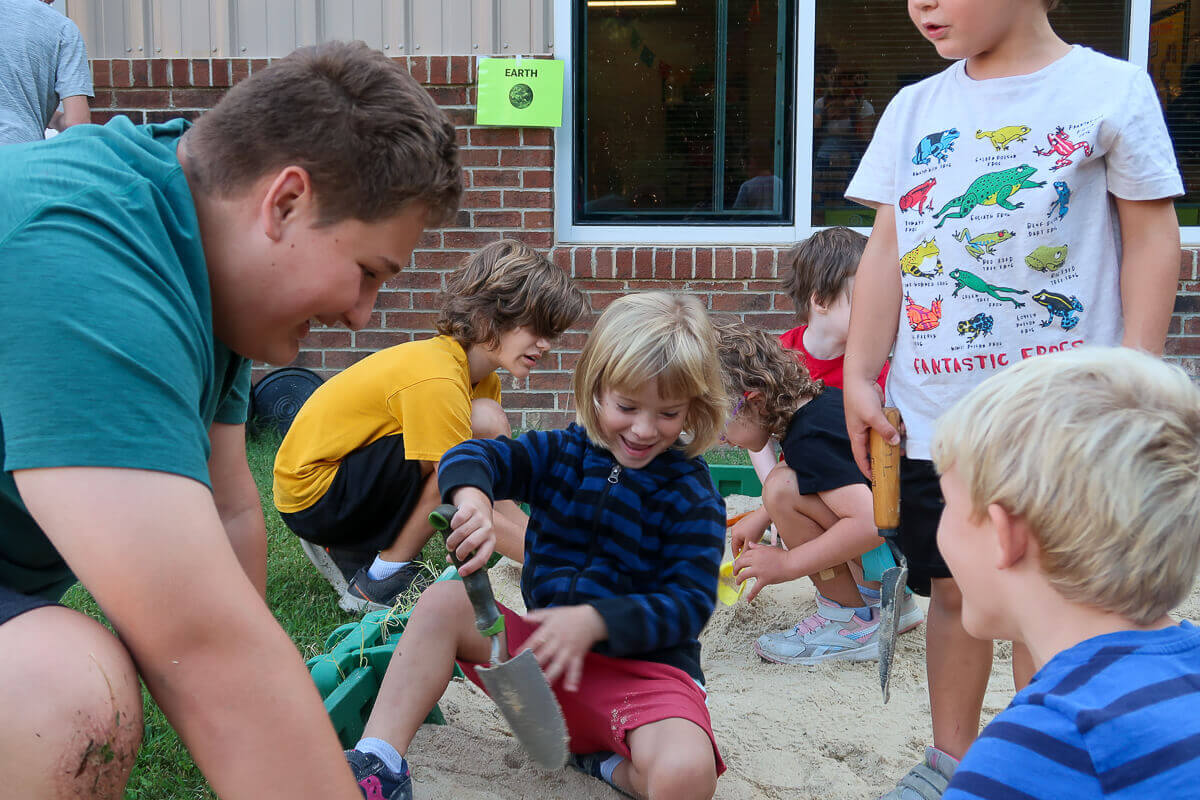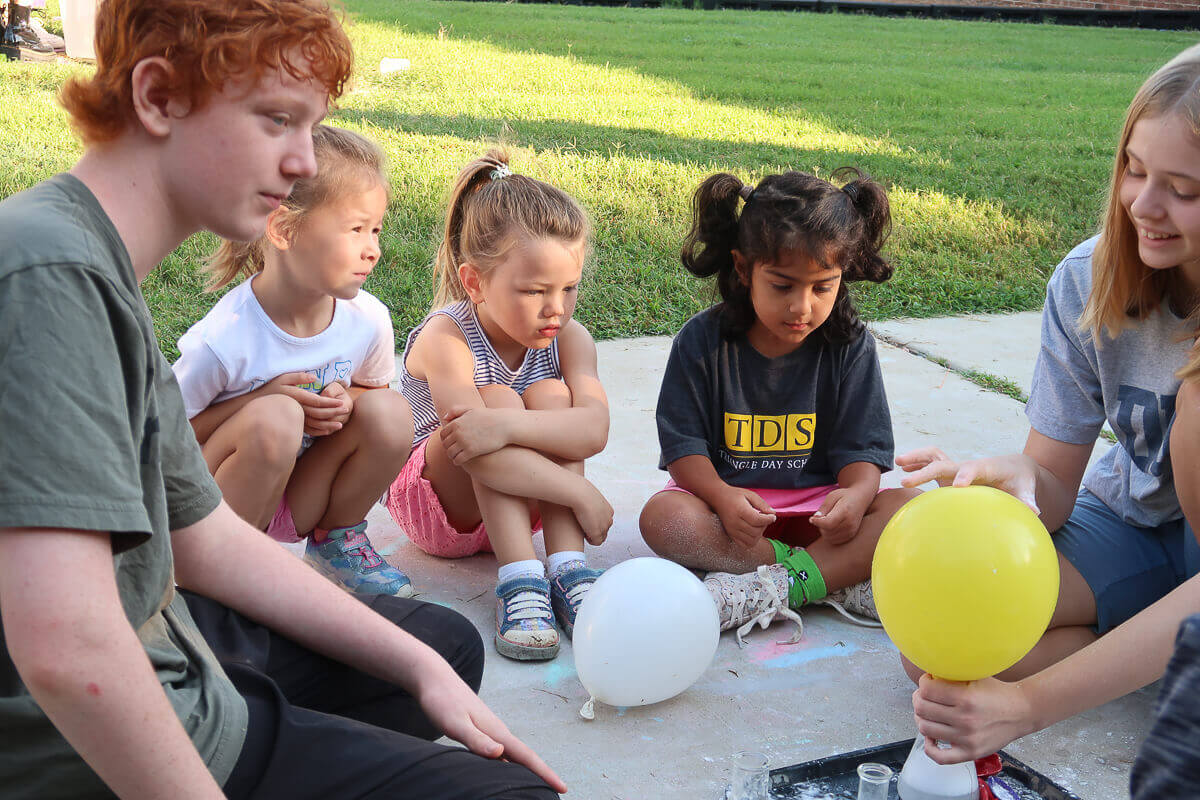After greeting your children each morning, I often spend the first 10-15 minutes of the day wandering among Lower School classrooms. What I observe stands in stark contrast to how we started our days for the past two years. ‘Carpet time’ is back in Lower School.
Earlier this week, I asked homeroom teachers what was different about this year. Their eyes lit up as they talked about physical proximity in the classroom.
While middle schoolers begin their day in advisory, LS classes convene on the carpet for a Morning Meeting. These have some combination of greetings (with elaborate rituals), daily messages (or, as they say in Ms. Ciccarelli’s class, “items of business”), sharing joys and concerns, and playing a game (often chosen by the students). Students also come to the carpet for read-alouds, singing (in TK), important conversations about our core values, and according to Ms. Cowan, “to start every lesson or activity in Kindergarten.”
When it comes to how life in each classroom is different this year, carpet time only tells part of the story. Our lower elementary students freely enter into dramatic, imaginative play, and kids in all grades engage in collaborative work throughout the day. In all cases, the intimacy that comes with being physically close to others helps cement the connections and learning.
Is all of this significant? Does it matter? While TDS remained a warm and welcoming place through the worst of the pandemic, masks, physical distancing, and other mitigation measures made social-emotional learning (SEL) much more of a challenge.
It has been nearly forty years since
Howard Gardner shifted attention away from IQ tests by writing about eight forms of intelligence, including interpersonal – maintaining a sensitivity to others and an ability to cooperate and empathize – and intrapersonal – understanding one’s own strengths and weaknesses. A dozen years later,
Daniel Goleman built upon Gardner’s ideas, suggesting that one’s EQ (emotional quotient) matters as much as one’s IQ when determining success in the workplace. Many studies suggest that developing these non-cognitive skills make children less vulnerable to anxiety and better able to recover quickly from setbacks, leading to more successful careers and happier lives.
David Deming, a Harvard economist,
argued that, since 1980, “jobs with high social skills requirements have experienced greater relative growth” and cognitive skills “are increasingly a necessary but not sufficient condition for obtaining a high-paying job.” The title of this Forbes magazine article says it all:
Forget Business School: Why an Emotional Education is Indispensable. Stressing the importance of emotional intelligence (EI) skills, Avid Larizadeh laments that “none of these attributes are taught in school.” Respectfully, I’d invite Ms. Larizadeh to spend a day at TDS. Here, she would witness students listening and responding to each other’s joys and concerns each morning, groups collaborating on projects, Ms. V and Ms. Harris teaching Reflections, coaches stressing teamwork, a daily focus on our core values, eighth graders leading TKers through science activities on Earth, Wind, and Fire Day, and so much more.
As grateful as we are to finally come together for all-school assemblies, the most significant change this fall has been the return to proximity in our classrooms.
